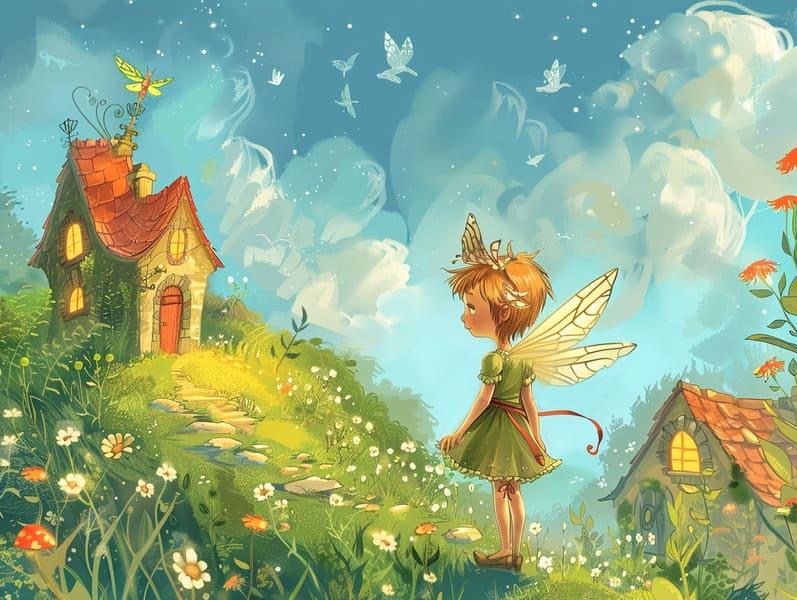The Start of Famous Fairy Tales with the Invariable Spell.
The Start of Famous Fairy Tales with the Invariable Spell.
Blog Article

Historical fairy tales have old origins. These tales have been narrated from one generation to the next well before they were ever transcribed. They originated from a variety of cultures, including African traditions. They were initially disseminated among mature audiences, often carrying themes and messages mirroring the societal norms and beliefs of the time.
The famous Grimm duo, Jacob and Wilhelm Grimm, were among the first to collect and release many of these beloved tales. Their published works, "Grimm's Fairy Stories," included narratives like "The Little Glass Slipper," "The Story of Hansel and Gretel," and "Little Snow White," which have since become staples in the world of children's fairy tales. Similarly, the Danish author's fanciful stories, such as "The Sea Maid," and "The Story of the Ugly Duckling," have won hearts worldwide, guaranteeing their place in the pantheon of iconic fairy tales.
Despite their historical roots, traditional fairy tales remain as applicable as ever, especially as children's night stories. These delightful tales are now available in many formats, including richly illustrated books, enchanting animations, and free fairy tales online.
Their lasting presence can be attributed to several whimsical characteristics:
Vital Lessons: Traditional fairy tales often whisper important moral lessons. Narratives like "The Shepherd Boy and the Wolf" teach the value of truth, while "The Race of the Tortoise and the Hare" show the virtues of resolve and meekness. These tales offer young readers clear distinctions between moral and immoral, helping to shape their moral compass in a gentle yet deep way.
Sympathy and Perception: Ancient fairy tales frequently include heroes facing problems and hurdles, prompting readers to connect with their struggles and celebrate their triumphs. For instance, "The Tale of Beauty and the Beast" shows us the benefit of looking deeper to appreciate the true being of a soul, fostering empathy and perception.
Cultural Recognition: Many timeless fairy tales are deeply embedded in the cultural contexts from which they bloomed. Reading these narratives can provide delightful insights into different ways of life, encouraging a sense of cultural awareness and awareness.
Imagination and Creativity: The fanciful elements in traditional fairy tales—talking animals—enliven children’s creative thoughts. These narratives guide readers to fantasy realms, unleashing innovative dreams and a sense of curiosity that persists a lifetime.
Ancient fairy tales are not only fascinating but also edifying. They act as mesmerizing tools in fostering various mental and emotional abilities in the young. When ancient fairy tales are voiced, they cultivate speaking abilities by bringing new vocabulary and intricate sentence structures. This practice also nurtures hearing abilities and attention, as young readers keep up with the story, prepared to see what happens next.
Furthermore, debating the themes and characters of old fairy tales can advance cognitive skills and evaluative skills. Children are instructed to spot patterns, foresee events, and get cause and effect. These analyses also help little ones express their thoughts and feelings, enhancing their emotional intelligence.
In today’s information age, the existence of online fairy tales has made these fairy tales more reachable than ever. Internet sites and applications provide large libraries of bedtime fairy tales that can be explored or listened through anytime, anywhere. Fairy tales read aloud are particularly sought after, providing an captivating way for children to delight in these mesmerizing stories. Read-aloud stories and spoken videos guide characters and settings to life, often supported by captivating harmonies and tunes that intensify the story journey.
The timeless fascination of ancient fairy tales lies in their ability to adjust to current times while staying true to their fundamental ideas. Contemporary versions of these fairy tales often incorporate more varied protagonists and modern settings, making them meaningful to today’s audience. However, the basic principles of spirit, charity, and equity remain unchanged, continuing to reach readers of all ages.
Ancient fairy tales also offer a sense of ease and homeliness. They grant access to a well-ordered narrative with a obvious beginning, middle, and end, often coming to a close with the settlement of conflicts and the triumph of justice over injustice. This uniformity can be reassuring for kids, bringing a sense of consistency in an constantly changing world.
Timeless fairy tales continue to captivate and teach new generations, maintaining their mystique and significance in modern society. As kids' bedtime tales, they allow a perfect blend of magic and knowledge, backing moral values, empathy, and creativity. The availability of internet fairy tales and the popularity of fairy tales spoken assure that these ancient stories remain attainable to new generations.
By conserving and sharing these tales, we continue to acknowledge the rich tapestry of cultural heritage and cultural heritage. Whether you are exploring a vibrantly illustrated book, viewing a electronic library, or playing an voice book, the captivation of popular fairy tales is always within reach. These tales teach us of the unwavering nature of fairy tales and its ability to tie us across centuries and lands.
No matter if you are exploring a beautifully illustrated book, viewing a digital library, or listening on an narrated book, the delight of ancient fairy tales is always within reach.
These stories these guys emphasize of the immortal influence of fairy tales and its ability to draw us together across generations and cultures, forging a link that delights and instructs alike.